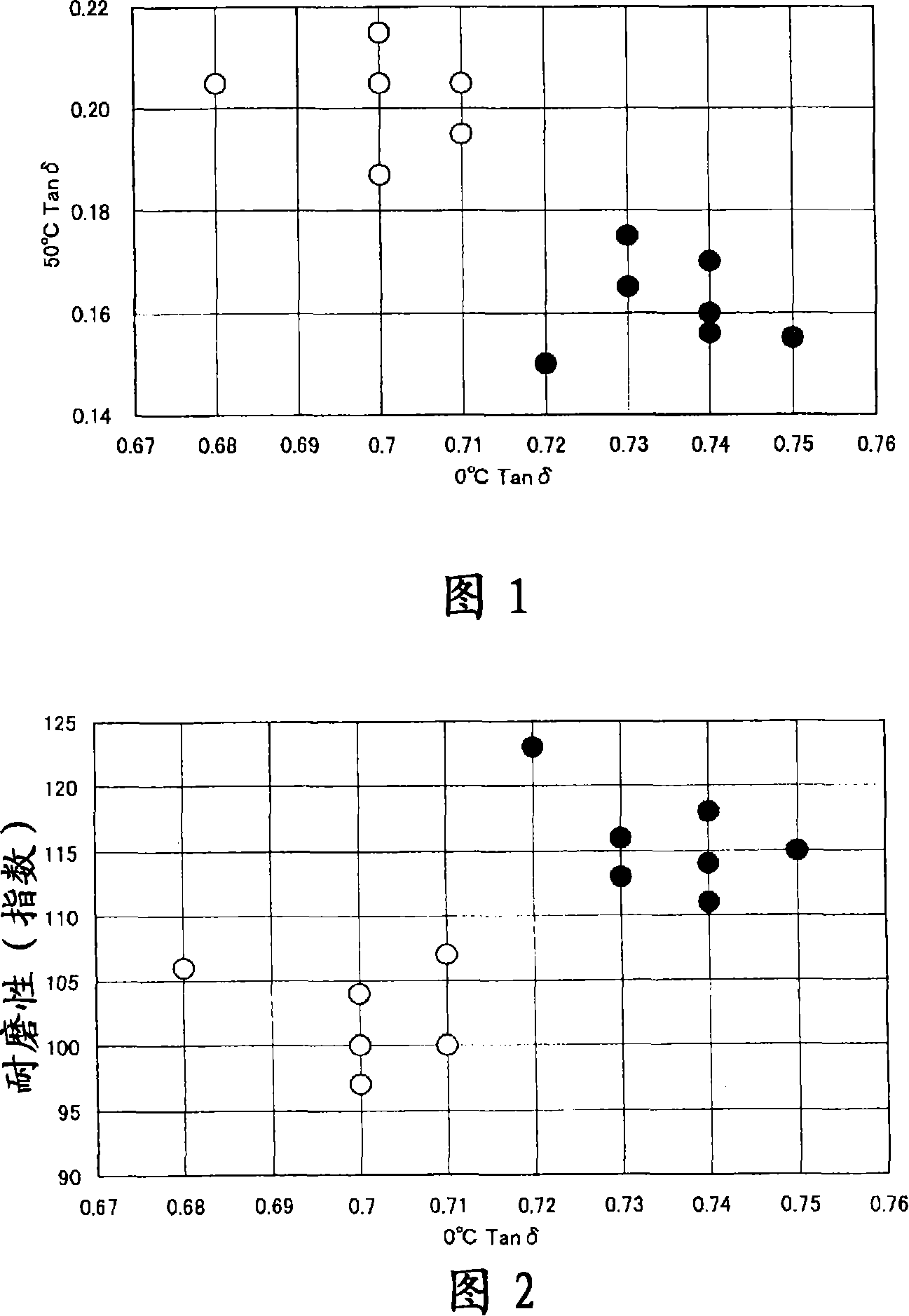Modified butadiene polymer composition
A polymer and composition technology, applied in the direction of rolling resistance optimization, road transportation emission reduction, etc., can solve the problems of active end deactivation, easy reduction of active lithium end residual ratio, difficulty in modification rate, etc., to achieve gripping performance and Excellent wear resistance and good workability
- Summary
- Abstract
- Description
- Claims
- Application Information
AI Technical Summary
Problems solved by technology
Method used
Image
Examples
Embodiment 1
[0117] Two polymerization reactors each having an internal volume of 10 liters, having a bottom inlet and a top outlet and equipped with a stirrer and a jacket for temperature regulation were connected, and a static mixer was connected downstream of the second reactor outlet . After mixing 16.38 g / min of butadiene (B1), 8.82 g / min of styrene (S1) and 132.3 g / min of n-hexane shown in Table 1, the resulting mixed solution was passed through a dehydration tower filled with activated alumina, It was further mixed with n-butyllithium at a rate of 0.00378 g / min (0.0591 mmol) in a static mixer immediately before entering the reactor to remove impurities and fed continuously to the bottom of the first reactor. In addition, 2,2-bis(2-oxolanyl)propane as a polar substance was added at a rate of 0.015 g / min and n-butyllithium as a polymerization initiator at a rate of 0.00504 g / min (0.0788 mmol). The rate is added to the bottom of the reactor. The internal temperature of the reactor wa...
Embodiment 2-12
[0120] Polymerization and modification are carried out in the same manner as in Example 1, except that the amount of 2,2-bis(2-oxolanyl)propane, the amount of n-butyllithium as a polymerization initiator, The amount of tetraglycidyl-1,3-bisaminomethylcyclohexane, the kind of butadiene, the polymerization temperature and the modification temperature were changed to the conditions shown in Table 2. The analytical values of the obtained modified copolymer (B-K) are shown in Table 2. The molecular weight distribution is unimodal.
[0121] In Example 4, instead of the aromatic oil (X-140), a mixed product of RAE and paraffin oil (Process NC-140, trade name) manufactured by Japan Enaji Co., Ltd. was used.
Embodiment 13-19 and comparative example 15-20
[0135] Rubber compounds using the samples shown in Tables 2 and 3 as raw rubber were obtained by the following kneading method according to the formulation shown in Table 4.
[0136] [kneading method]
[0137] In a Banbury-type closed kneader (inner volume: 1.7 liters) equipped with a temperature control device using external circulating water, the raw material rubber, fillers (silica and carbon black), organosilane coupling agent, and Aromatic oil, zinc white, and stearic acid were kneaded as the first-stage kneading under the conditions of a filling rate of 65% and a rotor speed of 66 / 77 rpm. After the resulting compound was cooled to room temperature, an antiaging agent was added thereto, and the compound was kneaded again as a second-stage kneading to improve dispersion of silica. Also, in this case, the discharge temperature is regulated by the temperature of the mixer.
[0138]After cooling, the sulfur and the vulcanization accelerator were kneaded in an open roll set ...
PUM
| Property | Measurement | Unit |
|---|---|---|
| number average molecular weight | aaaaa | aaaaa |
| polydispersity index | aaaaa | aaaaa |
| molecular weight | aaaaa | aaaaa |
Abstract
Description
Claims
Application Information
 Login to View More
Login to View More - R&D
- Intellectual Property
- Life Sciences
- Materials
- Tech Scout
- Unparalleled Data Quality
- Higher Quality Content
- 60% Fewer Hallucinations
Browse by: Latest US Patents, China's latest patents, Technical Efficacy Thesaurus, Application Domain, Technology Topic, Popular Technical Reports.
© 2025 PatSnap. All rights reserved.Legal|Privacy policy|Modern Slavery Act Transparency Statement|Sitemap|About US| Contact US: help@patsnap.com

